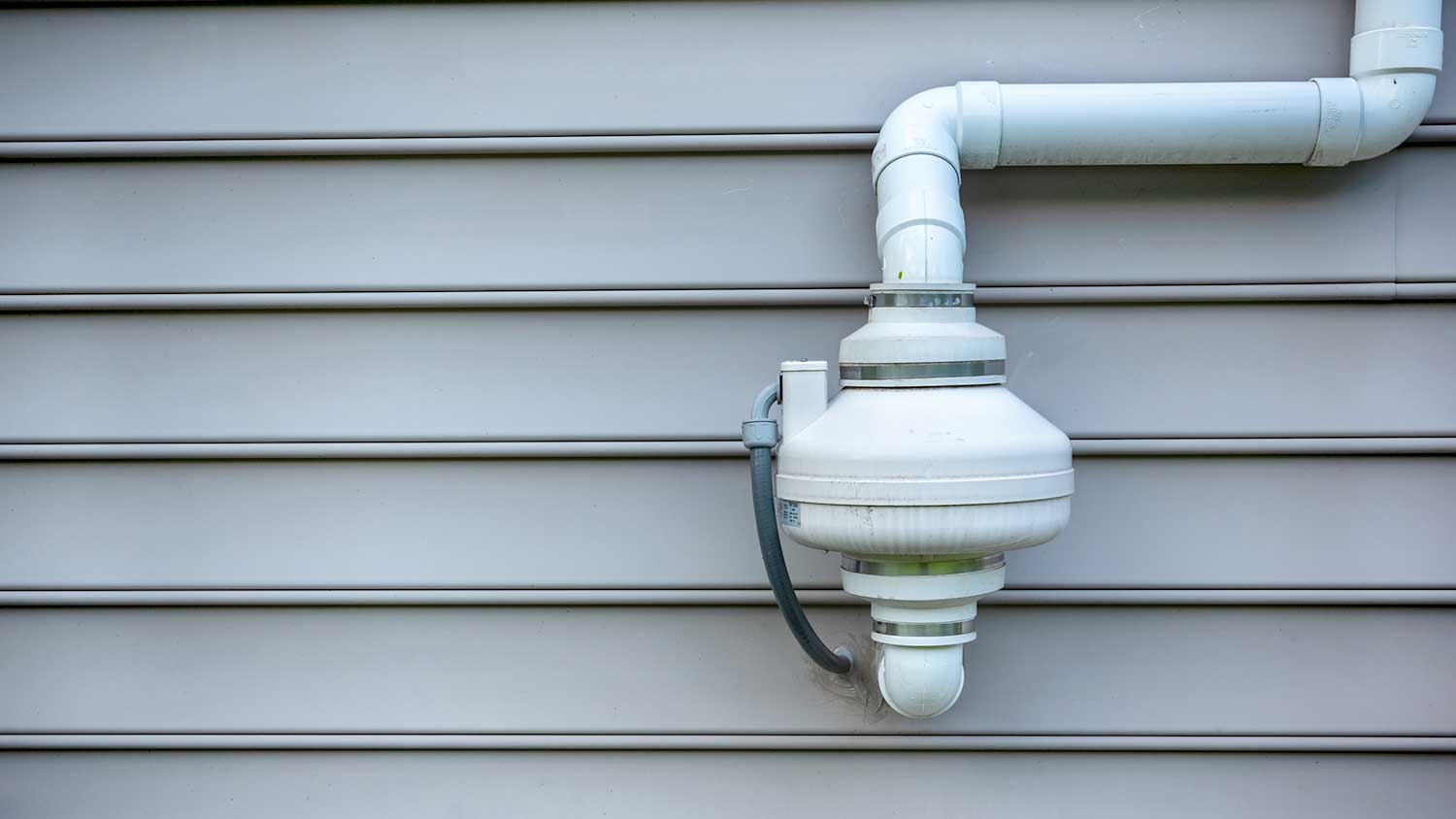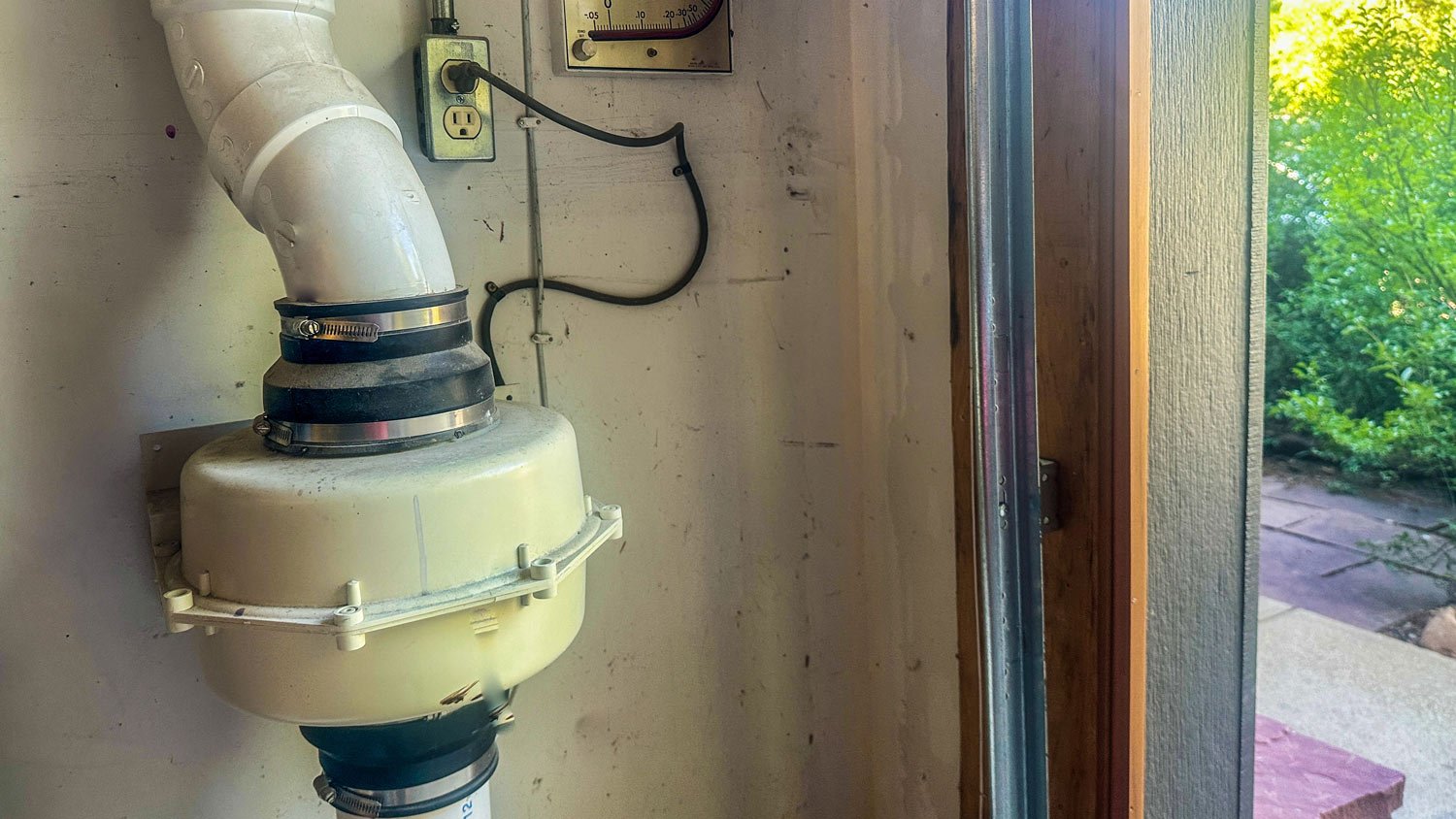
Discover the average indoor air quality testing cost, what impacts pricing, and how to budget for healthier air in your home.
The average radon mitigation system costs $1,031 to install. Costs vary by home size and age, so expect to pay between $786 and $1,276 on average.


Radon mitigation system costs are influenced by system type, the size of your home, your location, and other factors.
Active suction soil depressurization is the most common and effective method, and it costs $1,000 to $3,000 on average.
You should also budget for a radon test, which might set you back $150 to $700.
Your bill might cost $500 to $1,500 more if you live in a larger home.
The average radon mitigation system costs $1,031, though it often ranges between $786 and $1,276. Depending on factors such as the mitigation method, your location, and the size of the home, you might pay a minimum of $400 and a maximum of $1,775.
To help homeowners with their next project, Angi provides readers with the most accurate cost data and upholds strict editorial standards. We’ve surveyed thousands of real Angi customers about their project costs to develop the pricing data you see, so you can make the best decisions for you and your home. We pair this data with research from reputable sources, including the U.S. Bureau of Labor Statistics, academic journals, market studies, and interviews with industry experts—all to ensure our prices reflect real-world projects.
The cost of a radon mitigation system often ranges from $786 to $1,276, and it depends on the chosen approach, which might be sealing the basement, depressurization, or lower-level pressurization. The depressurization method happens in one of two types: active suction (soil depressurization) or passive depressurization.
Here’s what to expect for pricing by radon mitigation method:
| Method | Cost Range | Description |
|---|---|---|
| Sealing the Basement | $400–$4,600 | Only half as effective as other methods; you may need repeated resealing |
| Active Suction Soil Depressurization | $1,000–$3,000 | The most popular method; uses PVC pipe to suction gas trapped beneath your basement floor or crawl space, preventing radon from entering through foundation cracks |
| Passive Depressurization | $500–$2,500 | PVC pipes run beneath the foundation or crawl space and up the exterior walls; uses the difference in air pressure between the radon and the ambient air to push out the radon; not efficient for high radon levels |
| Wall-Based Systems | $500–$3,000 | A wall of cinder blocks is placed around the radon-affected room, and an exhaust pipe vents the gas from the space between the blocks |
| Ventilation Systems | $1,300–$2,500 | Two fans remove radon and vent it outside |
| Water Mitigation | $1,200–$5,000 | Carbon absorbs radon and efficiently cleans your water using bubbling or spraying aeration that disperses water molecules, releasing radon that is removed by a fan |

On average, radon mitigation systems are more expensive in areas with higher living costs like Los Angeles ($2,000) as opposed to lower-cost places like Kansas City ($700). Prices are also affected by the prevalence of radon in your area, the number of nearby specialists, region-specific EPA regulations, and climate.
Here’s what you might pay for radon mitigation systems in various cities:
Kansas City: $700
Denver: $800
Boston: $1,000
Atlanta: $1,100
Chicago: $1,200
New York: $1,400
Albuquerque: $1,500
Los Angeles: $2,000
The cost of a radon mitigation system is also influenced by additional factors, including home size, foundation type, radon testing, and more. Here’s what to expect.
Radon testing: $150–$700
Home size: $500–$1,500 more for larger homes
Permits: $25–$150
Electrician: $50–$100 per hour, if required for wiring, installing a radon fan, or other electrical work
Unfinished basements: $4,600 if you need sealing and a ventilation system
Additional encapsulation: $1,500–$15,000 if needed (for example, in a crawl space without a foundation slab)
Energy costs: $100–$300 per year
Extended warranties: $200–$500
While installing a radon mitigation system might cost $786 to $1,276, you should never attempt this project as a DIY. Radon is an odorless, invisible gas that can cause cancer at high levels of exposure. Sometimes, enough radon is present in the ground to seep into homes through the basement. Proper mitigation ensures long-term health.
Here’s why you should always hire a local radon mitigation specialist to install a system for you:
Proper installation requires specialized skills, tools, and knowledge. Pros design a specific system for your home’s needs.
An incorrectly installed system can compromise the air quality in your home and create a dangerous environment.
Many real estate transactions expect radon mitigation to be done by certified professionals.
Radon mitigation systems must meet local building codes and EPA guidelines—and pros understand how this works.
Hiring a pro provides post-installation testing and a warranty.
The costs of home radon mitigation can add up quickly. Here are a few tips to help you save without cutting corners on this important project.
Use a home testing kit ($15 to $60 on average) to see if you have enough radon to warrant professional testing and mitigation
DIY sealing of cracks and gaps in an unfinished basement prior to mitigation might save at least $100 to $500 on professional labor and materials. Note that sealing alone won’t eliminate radon.
Get three or more quotes from radon testing companies near you to ensure you get a competitive price, which often falls around $1,031.
See if companies offer referral programs or discounted rates (like 5% to 10% off the total installation cost) for new customers.
Talk to your tax professional about the possible tax benefits of paying for the system using a health savings account or flexible spending account (HSA/FSA).
Find out if you qualify for tax advantages or home repair grants in your local area. These incentives might cover $500 to $1,500 of your system.
You should always hire a pro to install a radon mitigation system, as incorrectly installed systems can compromise air quality and create a dangerous environment.
There are different types of radon mitigation systems, but they all function in a similar way—sucking the radon out of your house and dispersing it outside.
A radon mitigation system might cost anywhere from $400 to $1,775, and a pro can give you a personalized quote.
From average costs to expert advice, get all the answers you need to get your job done.

Discover the average indoor air quality testing cost, what impacts pricing, and how to budget for healthier air in your home.

Find out what impacts radon testing costs, including average prices for DIY kits and professional services, so you can protect your home and budget confidently.

Get clear answers on how much radon remediation costs, including average prices, key cost factors, and tips to save money on your home’s radon mitigation.

Radon is a gas that you can't see or smell and is harmful to your health. If your home has radon, you need to know who installs radon mitigation systems.

Find out the average cost of radon fan replacement, key price factors, and ways to save. Get expert tips to budget for your radon mitigation system.

Radon is a radioactive gas that can enter a home from the ground. Prepare yourself for mitigation by answering these questions before hiring a pro.